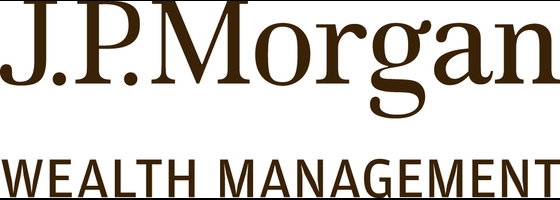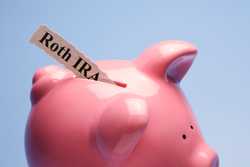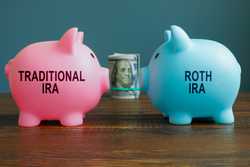What Average Rate of Return on 401(k) Can You Expect?

Our evaluations and opinions are not influenced by our advertising relationships, but we may earn a commission from our partners’ links. This content is created by TIME Stamped, under TIME’s direction and produced in accordance with TIME’s editorial guidelines and overseen by TIME’s editorial staff. Learn more about it.
Millions of Americans put their faith — and their money — in employer-sponsored 401(k) plans to save for retirement. As of Sept. 30, 2022, the more than 625,000 401(k) plans in the U.S. held $6.3 trillion in assets for about 60 million active participants as well as millions of retirees and former employees, according to the Investment Company Institute.
A 401(k) lets an employee shift part of their salary to an investment account up to a certain annual dollar amount. An employer might match some or all of an employee’s pretax contributions.
But while you may be aware of how much money goes into your 401(k) every month, do you know what the average return on a 401(k) investment is? The answer is typically 5% to 8% per year.
INVESTMENT AND INSURANCE PRODUCTS ARE: NOT A DEPOSIT • NOT FDIC INSURED • NO BANK GUARANTEE • MAY LOSE VALUE
J.P. Morgan Wealth Management is a business of JPMorgan Chase & Co., which offers investment products and services through J.P. Morgan Securities LLC (“J.P. Morgan”), a registered broker dealer and investment adviser, member FINRA and SIPC. TIME Stamped is a publisher of J.P. Morgan, (“Publisher”). The Publisher will receive compensation from J.P. Morgan if you provide contact details to speak with a J.P. Morgan representative. Compensation paid to the Publisher will be up to $500 per completed contact form. Compensation provides an incentive for the Publisher to endorse J.P. Morgan and therefore information, opinions, or referrals are subject to bias. J.P. Morgan and the Publisher are not under common ownership or otherwise related entities, and each are responsible for their own obligations. Investing involves market risk, including possible loss of principal, and there is no guarantee that investment objectives will be achieved.
Krisstin Petersmarck, an investment advisor representative at Bridegriver Advisors in Bloomfield Hills, Michigan, claimed the average annual return for a 401(k), based on a standard portfolio mix of 60% stocks and 40% bonds, is 5% to 8%.“Whether a 401(k) return is good or not really depends on how it is invested,” she said.
Furthermore, returns might go up and down from year to year in tandem with the overall stock market. One 401(k) index, the AmericanTCS 401(k) Composite Benchmark, posted a +14.9% return in 2021 but a -16.7% return in 2022.
“Among the most important — and perhaps intimidating — decisions you must make when you participate in a 401(k) plan is how to invest the money you're contributing to your account. The investment portfolio you choose determines the rate at which your account has the potential to grow, and the income that you'll be able to withdraw after you retire,” says FINRA, a nonprofit organization that oversees stockbrokers.
Because much of the money in a 401(k) is invested in the stock market, the return can fluctuate based on the market’s performance, Petersmarck said. In other words, a strong stock market can lift a 401(k), while a weak stock market can weigh down a 401(k).
To help protect your 401(k) from being drained by stock market losses, Petersmarck recommends diversifying your investment portfolio to spread around the risk. A 401(k) typically offers eight to 12 investment options.
Petersmarck suggests picking a 401(k) that allows you to invest some of your money in a money market fund, a low-risk type of mutual fund that buys and sells short-term debt. “But keep in mind that while you are protecting your investment from downside risk, you also are very limited on the upside, as money markets do not offer a high rate of return,” she said.
Mutual funds are the most popular type of 401(k) investment. A mutual fund collects money from many investors to buy investment products such as stocks, bonds and short-term debt.
In 2022, a little over half of U.S. households owned mutual funds, according to the Investment Company Institute. As of mid-2022, those funds held $22.2 trillion in assets.
Aside from market performance, factors that affect 401(k) returns include:
It’s not complicated to calculate the annual return rate for a 401(k). All you need is the formula, some data from your account and a calculator or pen and paper.
First, you’ll want to look at the beginning balance for your 401(k). Let’s say it’s $30,000. Over the course of a year, you’ve contributed $12,000 to the account, and the year-end balance is $45,000. That means the investment gains beyond what you’ve contributed are $3,000 ($45,000 - $30,000 - $12,000 = $3,000).
After doing that math, you can calculate the annual return rate with this formula: (Gains / ending balance) x 100.
So, if you plug in the numbers from our example, the formula would look like this:
($3,000 / $45,000 ) x 100 = 6.66%
Therefore, the annual return would be 6.66%.
A survey by 401(k) company Ubiquity revealed that nearly half of 401(k) participants (48.7%) were worried about poor investment returns in 2023. It’s anyone’s guess whether 401(k) investment returns will rise or fall in 2023. But if a recession happens in 2023, as many economists predict, and high inflation and high interest rates persist, 401(k) plans could suffer losses.
The performance of 401(k) plans in 2023 will depend heavily on the performance of the stock and bond markets. While the 2023 outlook for stocks is rocky, bond prices are on track to rebound from previous years, according to investment brokerage Charles Schwab.
While 401(k) plans are popular vehicles for retirement savings, they’re not the only option. Here are five alternatives to consider.
Generally, people buy annuities to supplement their retirement income.
An annuity is a contract between you and an insurance company. Only life insurance companies issue annuities. In exchange for premiums you pay to an insurer, you receive a one-time payout or a series of payouts.
U.S. annuity sales reached $310.6 billion in 2022, up 22% from the previous year.
Contributions to a traditional IRA are made on a tax-free basis, with taxes being paid later when the money is withdrawn.
According to the Investment Company Institute, 40.9 million U.S. households owned traditional IRAs in 2022. Investment options for traditional IRAs (and Roth IRAs) include stocks, bonds, mutual funds and exchange-traded funds (ETFs).
Contributions to a Roth IRA are made with money that’s already been taxed, so these contributions are not tax-deductible. However, future earnings and withdrawals are tax-free.
According to the Investment Company Institute, 32.3 million U.S. households owned Roth IRAs in 2022.
People open a brokerage account at an investment brokerage so they can buy and sell investment products such as stocks, bonds, mutual funds and ETFs. Investing this way offers greater flexibility but also fewer tax advantages. Many brokerage firms also provide investment advice to help you build a personalized portfolio that’s tailored to your goals.
INVESTMENT AND INSURANCE PRODUCTS ARE: NOT A DEPOSIT • NOT FDIC INSURED • NO BANK GUARANTEE • MAY LOSE VALUE
J.P. Morgan Wealth Management is a business of JPMorgan Chase & Co., which offers investment products and services through J.P. Morgan Securities LLC (“J.P. Morgan”), a registered broker dealer and investment adviser, member FINRA and SIPC. TIME Stamped is a publisher of J.P. Morgan, (“Publisher”). The Publisher will receive compensation from J.P. Morgan if you provide contact details to speak with a J.P. Morgan representative. Compensation paid to the Publisher will be up to $500 per completed contact form. Compensation provides an incentive for the Publisher to endorse J.P. Morgan and therefore information, opinions, or referrals are subject to bias. J.P. Morgan and the Publisher are not under common ownership or otherwise related entities, and each are responsible for their own obligations. Investing involves market risk, including possible loss of principal, and there is no guarantee that investment objectives will be achieved.
Purchasing real estate can be a source of retirement income. Among the types of properties that people invest in are short-term residential rentals, long-term residential rentals, warehouses, hotels and undeveloped land.
People can also generate retirement savings by buying shares of real estate investment trusts (REITs), which are companies that own income-producing properties.
Based on a standard portfolio mix of 60% stocks and 40% bonds, the average rate of return for a 401(k) generally ranges from 5% to 8%.
Mutual funds are the most popular kind of investment in a 401(k).
An analysis by investment brokerage Fidelity found the average 401(k) balance stood at $103,900 in the fourth quarter of 2022.
If you left a job and forgot to roll your 401(k) into an IRA or into your new employer’s retirement plan, you can use a service like Beagle Financial Services to hunt down your account.
The information presented here is created by TIME Stamped and overseen by TIME editorial staff. To learn more, see our About Us page.




